Aleppo red pepper flakes are a mild, smoky, and fruity spice made from sun-dried Halaby peppers native to Syria and Turkey. Known for their brick-red color and oil-rich skin, they offer a balanced heat level (10,000–25,000 Scoville units) with complex flavor notes, making them a versatile addition to any kitchen.
Table of Contents
- What Exactly Are Aleppo Red Pepper Flakes?
- What Do They Taste Like?
- How to Use Aleppo Red Pepper Flakes in Cooking
- Buying Guide: Choosing the Best Aleppo Pepper Flakes
- Aleppo vs. Other Red Pepper Flakes: What's the Difference?
- Frequently Asked Questions
- Pro Tips: Storage, Substitutes & More
- Conclusion: Love at First Sprinkle
What Exactly Are Aleppo Red Pepper Flakes?
Aleppo red pepper flakes come from the famous Halaby pepper, native to Syria and Turkey. Named after the city of Aleppo (Halab), these peppers are sun-dried and then crushed into coarse flakes. Known for their signature brick-red color and oil-rich skin, they pack a mild-to-medium heat level with complex flavor notes.
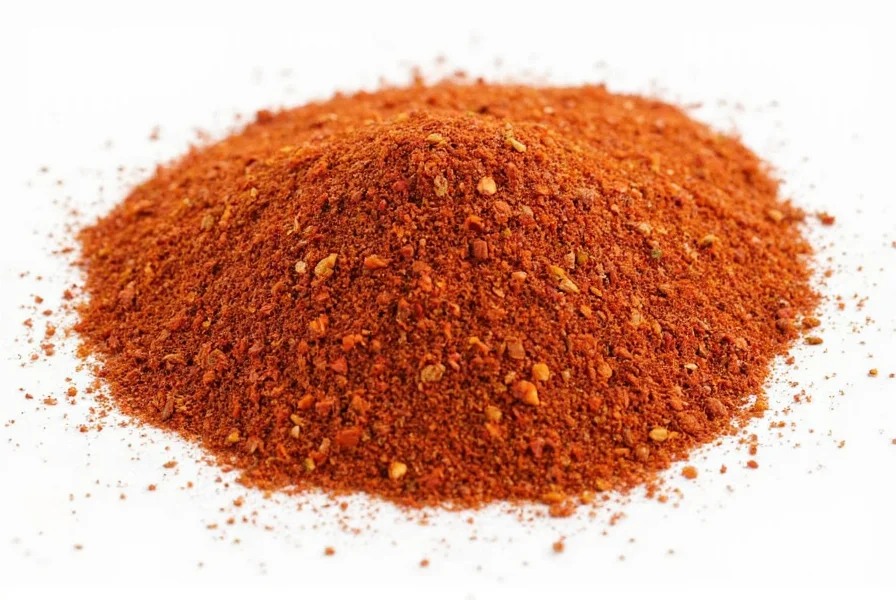
Their history is as rich as their taste. Once a staple in Middle Eastern kitchens, they've now made their way into gourmet pantries around the world. Due to regional conflicts, authentic Aleppo pepper has become harder to source, leading to alternative production in places like Turkey and California. Still, quality varies — which brings us to the next point...
What Do They Taste Like?
If you imagine a spice that's smoky, earthy, fruity, and just a touch nutty, you're getting close. Aleppo pepper delivers a slow-burning warmth rather than an immediate punch. Think of it as the velvet glove of chili spices — smooth and refined, with a lingering fire that keeps your taste buds engaged.
- Heat Level: 10,000–25,000 Scoville units (milder than cayenne)
- Flavor Notes: Smoky, sweet, citrusy, and slightly salty
- Mouthfeel: Silky thanks to natural oils in the pepper skin
How to Use Aleppo Red Pepper Flakes in Cooking
Let's talk versatility. These aren't just for sprinkling on pizza or pasta — though they do that beautifully. Here are some fun and flavorful ways to incorporate Aleppo into your meals:
1. The Classic Sprinkle
Add a pinch to hummus, scrambled eggs, or avocado toast. Instant upgrade!
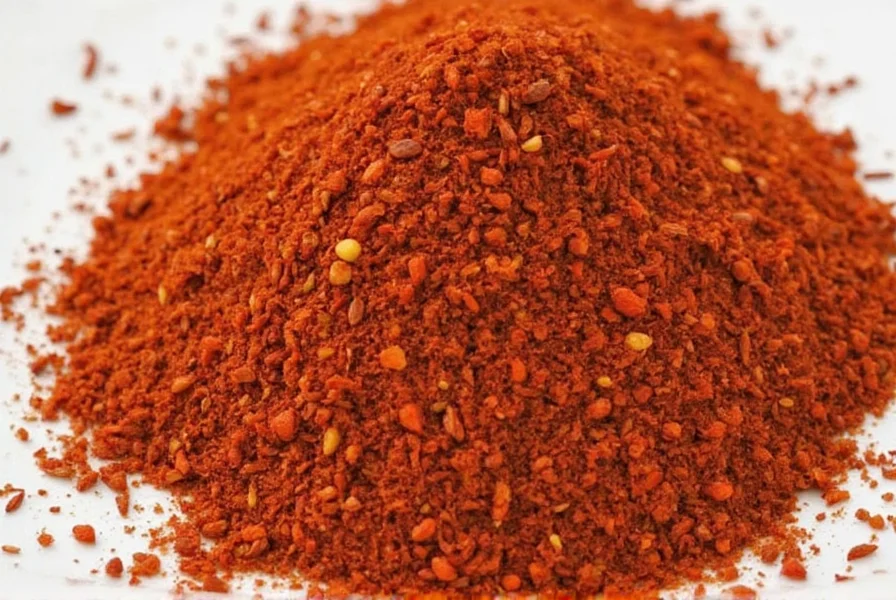
2. Roasted Veggie Magic
Toss vegetables like carrots, eggplant, or zucchini in olive oil, salt, and Aleppo before roasting. Earthy sweetness meets smoky heat — perfect harmony.
3. Liven Up Soups & Stews
From lentil soup to tomato bisque, a sprinkle adds depth without overwhelming other flavors.
4. Homemade Harissa Substitute
Mix ground garlic, lemon juice, olive oil, and Aleppo flakes for a quick harissa-like paste. Great for marinades and spreads.
5. Elevate Meat Rubs
Combine with smoked paprika, cumin, and coriander for a rub that enhances grilled chicken or lamb chops.
Buying Guide: Choosing the Best Aleppo Red Pepper Flakes
| Feature | Good Quality | Poor Quality |
|---|---|---|
| Color | Bright reddish-orange | Dull brownish-red |
| Texture | Coarse, flaky, and slightly oily | Dry, powdery, or overly crushed |
| Smell | Earthy, smoky, slightly sweet | Moldy, stale, or chemical-like |
| Packaging | Opaque, airtight container | Clear plastic bags (exposure to light damages flavor) |
Top Recommended Brands
- Zamouri Spices: Sourced from Turkish-grown peppers; clean, consistent flavor. Ideal for gourmet cooking.
- Spice Hunter Organic: Organic certified; great for health-conscious users.
- LaBohème Aleppo Style: U.S.-grown; sustainable farming practices; ideal for home cooks.
- Middle Eastern Market Brands: Often more affordable and suitable for everyday use.
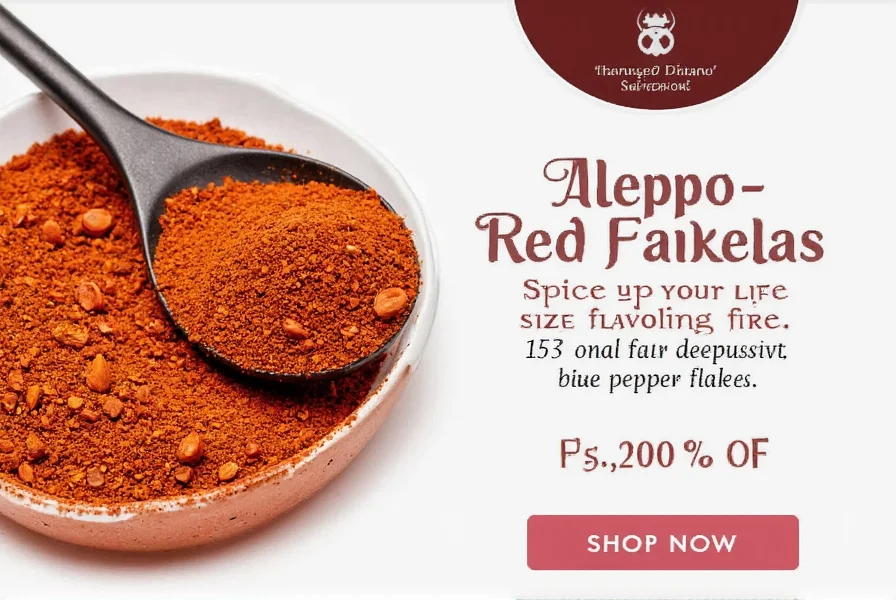
Aleppo vs. Other Red Pepper Flakes: What's the Difference?
You might be wondering: "How does Aleppo compare to the more common crushed red pepper flakes found on every American table?" Let's break it down:
| Characteristic | Aleppo Flakes | Crushed Red Pepper Flakes | Cayenne Flakes |
|---|---|---|---|
| Heat Level | Mild-Medium | Medium-Hot | Hot |
| Flavor Profile | Smoky, Fruity, Citrusy | Grassy, Sharp, Bitter | Sharp, Pungent |
| Texture | Coarse, Oily | Crunchy, Dry | Very Fine, Dusty |
| Best For | Slow-cooked dishes, finishing touches | Pasta sauces, spicy soups | Cajun dishes, hot sauces |
In short: if you want heat without numbing your tongue, Aleppo is your go-to. If you're craving that classic fiery kick, stick with crushed red pepper or cayenne.
Frequently Asked Questions About Aleppo Red Pepper Flakes
What are Aleppo red pepper flakes?
Aleppo red pepper flakes are made from Halaby peppers native to Syria and Turkey. Named after the city of Aleppo (Halab), these peppers are sun-dried and crushed into coarse flakes. They have a distinctive brick-red color, mild-to-medium heat level (10,000-25,000 Scoville units), and offer complex flavor notes of smokiness, fruitiness, and a slight nuttiness. Unlike regular crushed red pepper, Aleppo pepper has a more nuanced flavor profile with citrusy notes and natural oils that give it a silky mouthfeel.
How hot are Aleppo pepper flakes compared to regular red pepper flakes?
Aleppo pepper flakes are significantly milder than standard crushed red pepper flakes. While Aleppo measures between 10,000-25,000 Scoville units (milder than cayenne), traditional crushed red pepper flakes typically range from 30,000-50,000 Scoville units. Aleppo provides a slow-building warmth rather than an immediate punch, making it more about flavor enhancement than intense heat. It's perfect for those who want to add spice without overwhelming other flavors in a dish.
What can I use instead of Aleppo pepper?
If you can't find authentic Aleppo pepper, try these substitutions:
- For mild heat: Mix 2 parts sweet paprika with 1 part cayenne pepper
- For smoky flavor: Combine smoked paprika with a pinch of chili powder
- For fruity edge: Use ancho chili powder with a tiny bit of orange zest
How should I store Aleppo pepper flakes?
To maintain maximum freshness and flavor:
- Store in a cool, dark place in an airtight container
- Avoid exposure to light, heat, and moisture
- Use within 6-12 months for peak flavor (though they'll remain safe for 1-2 years)
- Do not refrigerate unless you live in an extremely humid climate
What foods pair well with Aleppo pepper?
Aleppo pepper's balanced flavor makes it incredibly versatile:
- Perfect on avocado toast, hummus, and scrambled eggs
- Excellent with roasted vegetables like eggplant, carrots, and zucchini
- Adds depth to soups, stews, and tomato-based sauces
- Great in marinades for chicken, lamb, and fish
- Surprisingly delicious on chocolate desserts for a subtle heat
Why are authentic Aleppo peppers sometimes hard to find?
Authentic Aleppo peppers (from Syria) have become harder to source due to regional conflicts that disrupted traditional growing and production. Many brands now source Aleppo-style peppers from Turkey or California, which can vary in quality and flavor profile. While these alternatives are good, they may not have the exact same characteristics as peppers grown in the Aleppo region. Look for reputable spice brands that specify their sourcing to get the best quality Aleppo pepper flakes.
Can I use Aleppo pepper in place of cayenne?
Yes, but with important considerations. Since Aleppo pepper is significantly milder than cayenne (which measures 30,000-50,000 Scoville units), you'll need to use about 1.5-2 times more Aleppo to achieve similar heat levels. However, keep in mind that Aleppo brings different flavor notes - it's smoky, fruity, and slightly citrusy rather than the sharp, pungent heat of cayenne. For recipes where heat is the primary goal, stick with cayenne. For dishes where you want to add both heat and complex flavor, Aleppo is the superior choice.
Are Aleppo peppers the same as crushed red pepper?
No, they are quite different. While both are red pepper flakes, they come from different pepper varieties and have distinct characteristics:
- Origin: Aleppo comes from Halaby peppers (Capsicum annuum) from Syria/Turkey; standard crushed red pepper is typically from Italian or Turkish pepper varieties
- Heat: Aleppo is milder (10,000-25,000 Scoville) vs. crushed red pepper (30,000-50,000)
- Flavor: Aleppo is smoky, fruity, and citrusy; crushed red pepper is grassy and sometimes bitter
- Texture: Aleppo is coarse and slightly oily; crushed red pepper is dry and crunchy
Pro Tips: Storage, Substitutes & More
Storage Tips
- Store in a cool, dark place in an airtight container
- Shelf life: 1–2 years (but best within 6–12 months for peak flavor)
- Avoid moisture — keep away from steam or humidity
- No need to refrigerate unless in extremely humid climates
Substitute Suggestions
If you can't find Aleppo pepper, try these combos:
- Mild Heat: Paprika + a pinch of cayenne
- Smoky Flavor: Smoked paprika + chili powder
- Fruity Edge: Ancho chili powder + orange zest
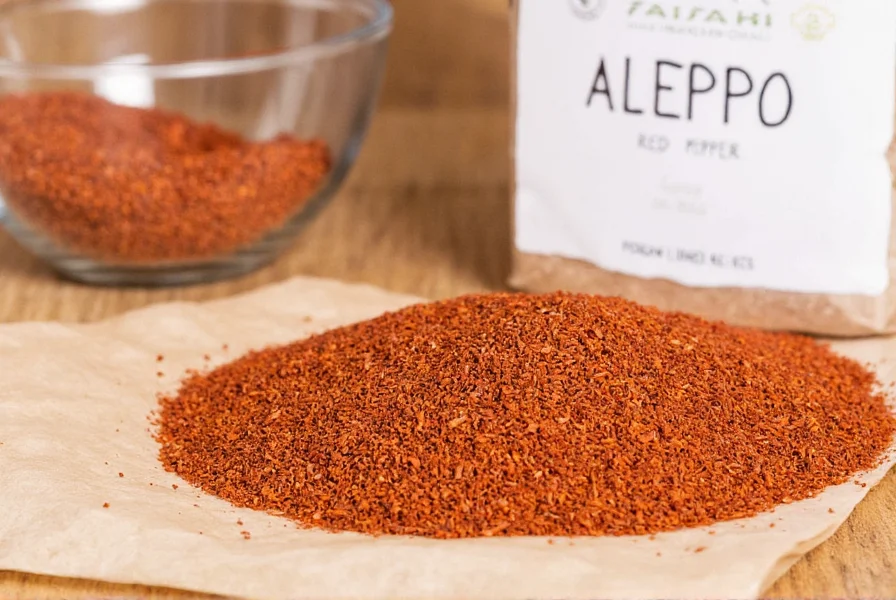
Don't Overdo It
Aleppo builds flavor slowly, so it's better to add less at first and adjust later. You can always add more heat, but you can't take it out once it's in the pot!
Oil Extraction Hack
Want to infuse oil with Aleppo flavor? Simply stir a spoonful into warm olive oil and let sit for 15–20 minutes. Strain and use for dressings, drizzles, or sautéing.
Conclusion: Love at First Sprinkle
Aleppo red pepper flakes are more than just a spice — they're a flavor experience. With their balanced heat, aromatic complexity, and culinary versatility, they deserve a starring role in your kitchen. Whether you're jazzing up breakfast, spicing up dinner, or gifting a unique pantry item to a fellow foodie, Aleppo won't disappoint.
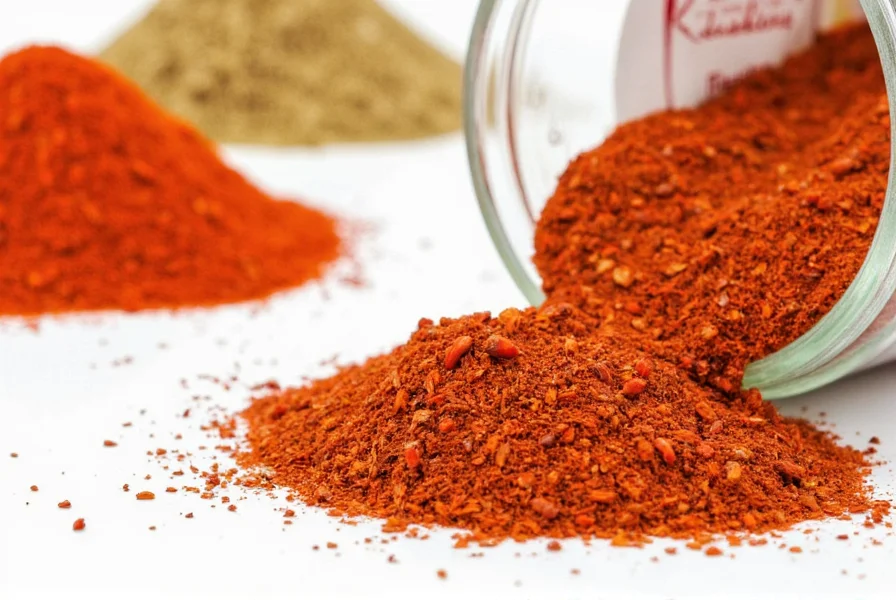
So go ahead — open that jar, give it a sniff, and sprinkle your way to deliciousness. After all, life's too short for bland food!
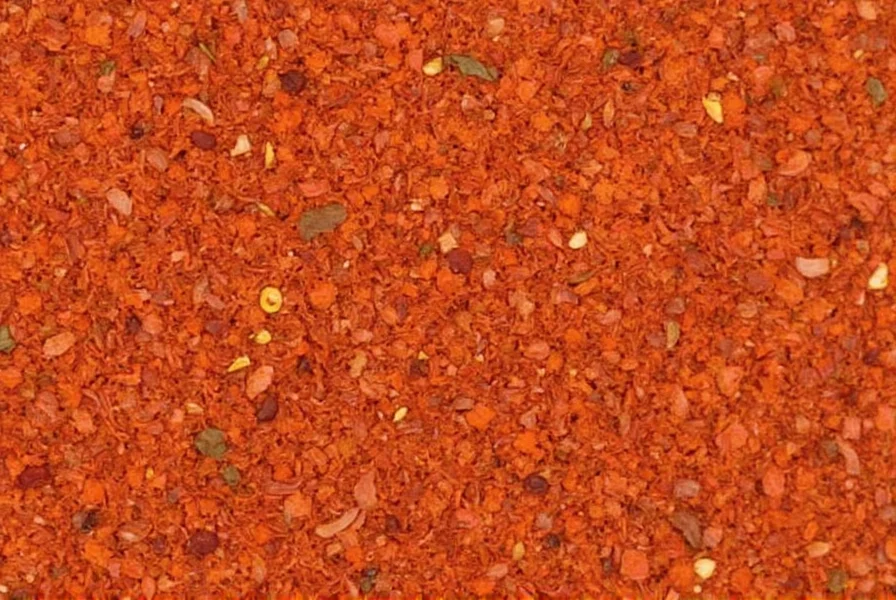

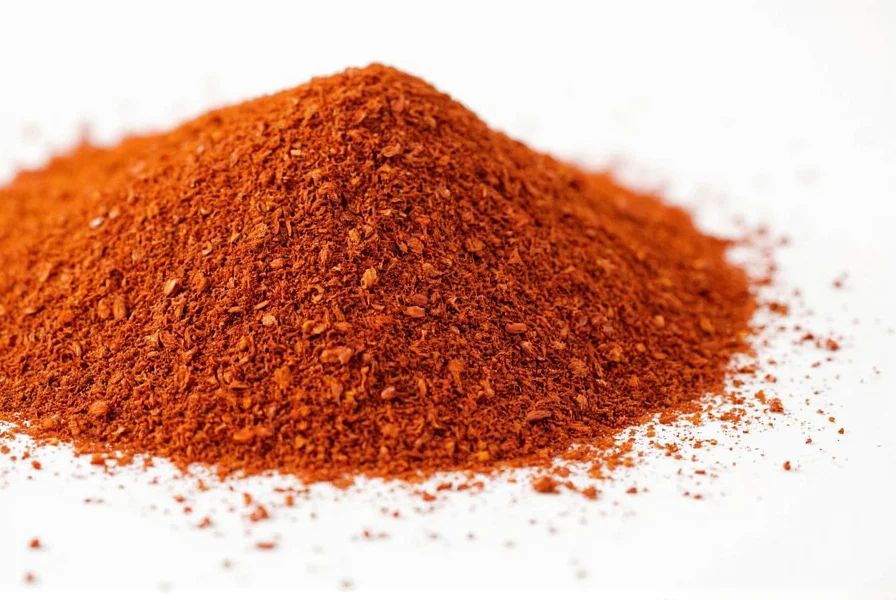









 浙公网安备
33010002000092号
浙公网安备
33010002000092号 浙B2-20120091-4
浙B2-20120091-4